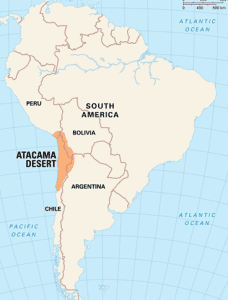TAMIL NADU INITIATES SYNCHRONISED SURVEY TO ESTIMATE NILGIRI TAHR POPULATION
TAG: GS 3: ECOLOGY AND ENVIRONMENT
THE CONTEXT: The Tamil Nadu government has launched a concerted effort to assess and potentially uplift the population of the Nilgiri Tahr, a species listed as endangered by the International Union for Conservation of Nature (IUCN).
EXPLANATION:
- This comprehensive survey aims to provide vital data for conservation efforts and potentially remove the species from its endangered status.
Nilgiri Tahr
- The Nilgiri Tahr, scientifically known as Nilgiritragus hylocrius, is native to the Anamalai and Nilgiris landscape in Tamil Nadu.
- Once abundant in the region, the species has dwindled in numbers due to habitat loss, poaching, and other human-induced factors.
- The Nilgiri Tahr is the only mountain ungulate in southern India amongst the 12 species present in India.
- It is the state animal of Tamil Nadu.
- The Nilgiri Tahr, which used to be found along the entire stretch of Western Ghats, is presently found only in small fragmented pockets.
- The Eravikulam National Park has the highest density and largest surviving population of Nilgiri tahr.
- October 7 is celebrated as ‘Niligiri Tahr Day’ in honour of E.R.C. Davidar, who was responsible for pioneering one of the first studies of the species in 1975.
- It is protected under Schedule-I of the Wildlife (Protection) Act, 1972, and Endangered as per the IUCN Red List.
 Nilgiri Tahr
Nilgiri Tahr
Highlights of the Survey:
- The primary objective of the three-day survey is to estimate the current population of Nilgiri Tahrs in Tamil Nadu.
- The data gathered will serve as a baseline for conservation initiatives and inform future management strategies.
- The survey is a collaborative effort involving various stakeholders, including the World Wide Fund for Nature, the Wildlife Institute of India, and the International Union for Conservation of Nature (IUCN).
- The IUCN will be represented by its country director as an observer during the survey, highlighting the international significance of the conservation endeavor.
- The survey employs advanced techniques such as the bounded-count method and the double observer method to ensure accuracy in population estimation.
- Emphasis is placed on areas along the Kerala border, where significant populations of Nilgiri Tahrs are known to inhabit.
Significance of Population Estimation
- The survey’s results will provide crucial baseline data for Project Nilgiri Tahr, a conservation initiative aimed at stabilizing the species’ population.
- Conservation efforts will focus on addressing the threats faced by Nilgiri Tahrs, including habitat degradation and human-wildlife conflict.
Future Conservation Strategies
- Based on the survey findings, Project Nilgiri Tahr will implement targeted interventions to safeguard the species’ habitat and promote its population growth.
- The possibility of reintroducing Nilgiri Tahrs into suitable habitats, such as the Sathyamangalam Tiger Reserve, will be explored to bolster population numbers.
International Union for the Conservation of Nature (IUCN):
- The International Union for Conservation of Nature (IUCN) is an international organization working in the field of nature conservation and sustainable use of natural resources.
- Founded in 1948, IUCN has become the global authority on the status of the natural world and the measures needed to safeguard it.
- IUCN’s mission is to “influence, encourage and assist societies throughout the world to conserve nature and to ensure that any use of natural resources is equitable and ecologically sustainable.”
- It is involved in data gathering and analysis, research, field projects, advocacy, and education.
- IUCN has a membership of over 1,400 governmental and non-governmental organizations from over 170 countries, and around 16,000 scientists and experts participate in its work on a voluntary basis.
- Its headquarters is in Gland, Switzerland.

